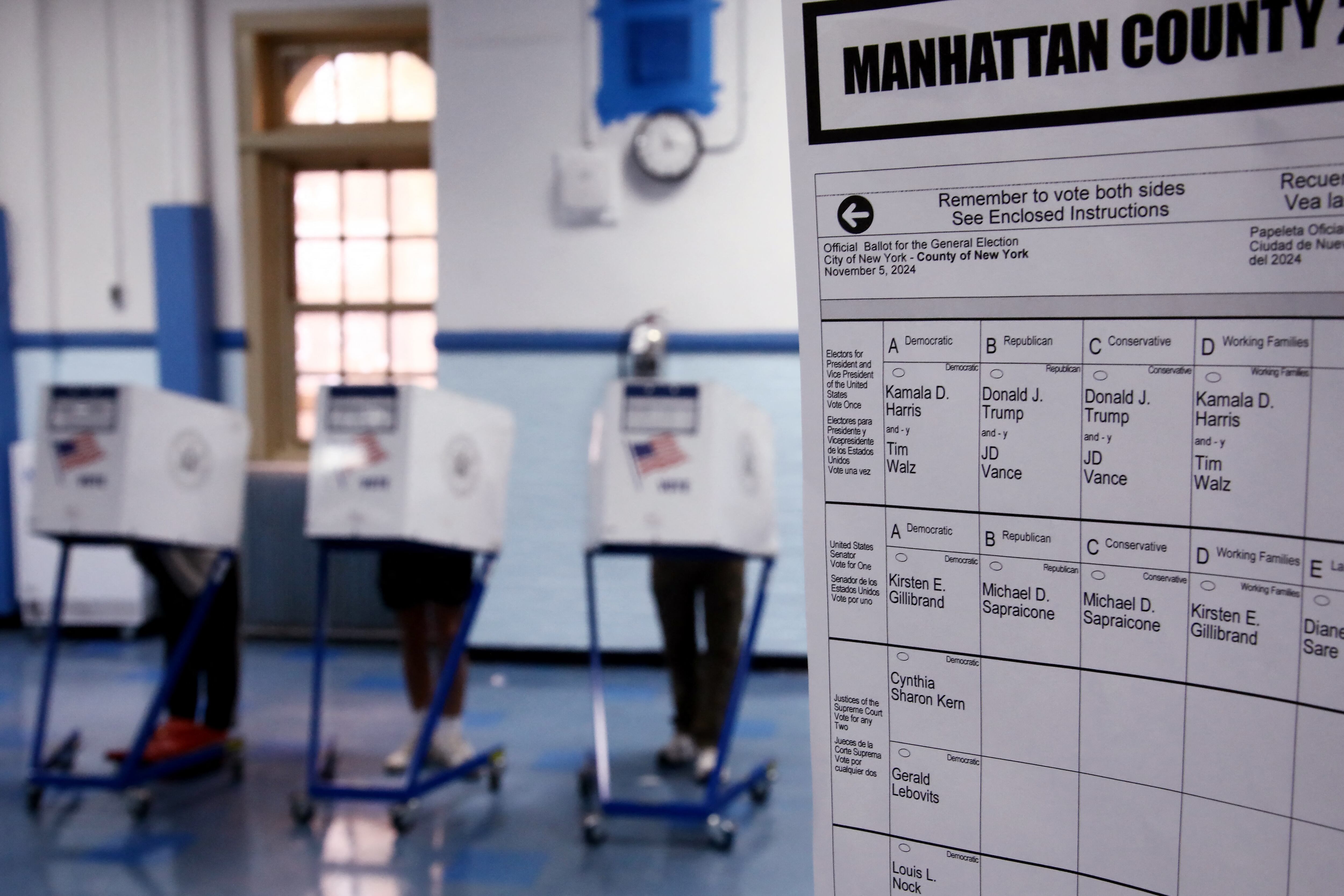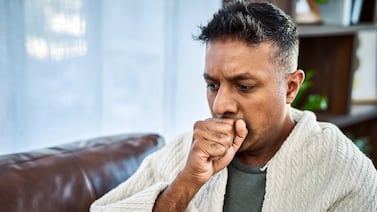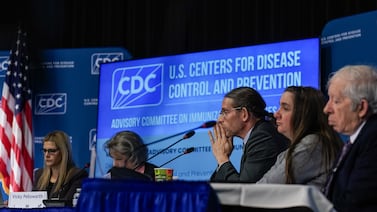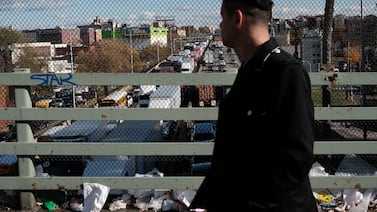Sign up for Your Local Epidemiologist New York and get Dr. Marisa Donnelly’s community public health forecast in your inbox a day early.
I want to start this week’s YLE New York by acknowledging the uncertainties and anxieties around what the election results mean for public health in the United States, and by recommitting to our YLE mission. Regardless of politics, we will continue sharing accurate, honest, and reliable public health information. We are still here to empower you all to make evidence-based decisions to keep yourselves and your loved ones healthy. That won’t change.
Now, let’s get back to this week’s public health updates.
New Yorkers voted to protect abortion rights
In last week’s election, New Yorkers passed Proposition 1, a ballot measure that makes abortion rights part of the New York state constitution.

Proposition 1 was also known as the Equal Rights Act because it prevents discrimination based on pregnancy, pregnancy outcomes, and reproductive health care, as well as age, gender identity, and sexual orientation. New York joined six other states that voted to protect abortion rights last week.
In New York, abortion has been legal since 1970 (three years before Roe vs. Wade). People of all ages have the right to abortions in New York:
- Through the 24th week of pregnancy, or
- After that, if a medical provider decides the fetus is not viable, or if the mother’s life or health are at risk.
Minors do not need parental permission to receive an abortion or birth control in New York.
In 2021, there were 59,616 abortions in New York state, including 37,813 in New York City. While the data are not finalized, we have more recent estimates of between 9,000 and 11,000 abortions per month in the state.
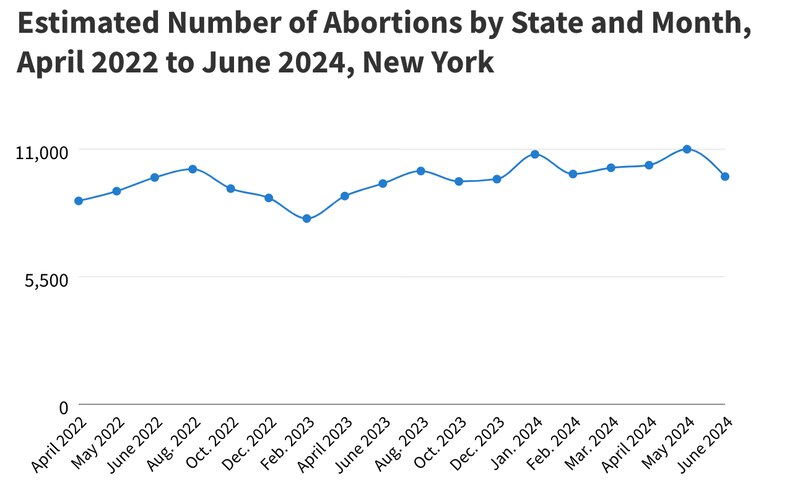
Covid-19 remains minimal across New York
Covid-19 is minimal and continues to decline in New York. SARS-CoV-2 wastewater concentrations (a good proxy for Covid-19 infections) continue to be minimal. The hospitalization rate in New York state is only 0.47 per 100,000 persons, which is down from the summer peak of 1.12 in August.
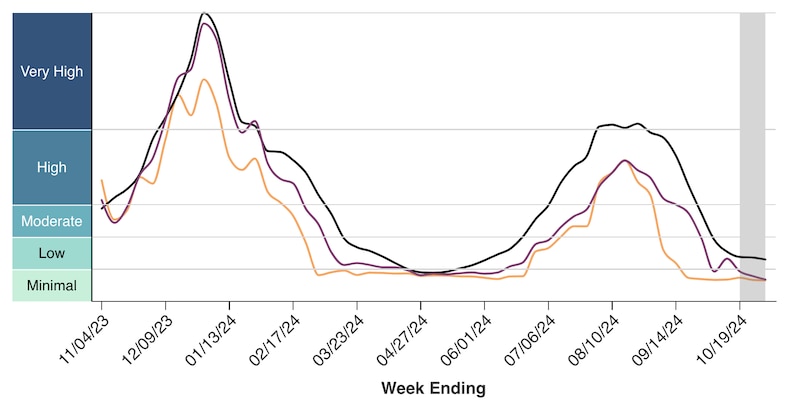
Influenza and RSV increasing in New York
The respiratory season has “officially” begun in New York. The state and city health departments are sharing weekly updates on influenza and RSV transmission for the respiratory season.
The number of flu cases in New York state is still low but starting to increase quickly. It’s increased by 12% since last week. These increases are happening in all New York regions except the West. It’s not clear why, but I expect increases there soon, too.
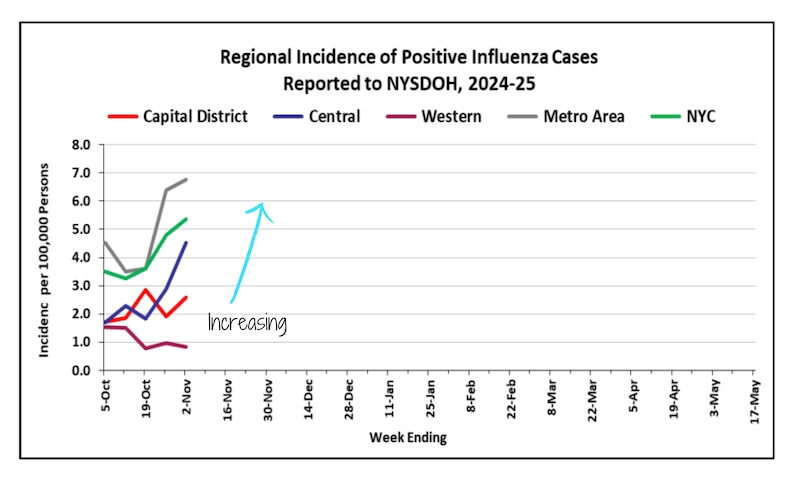
RSV is also starting to increase. Testing data for New York City show that positive RSV tests increased by 34% last week.
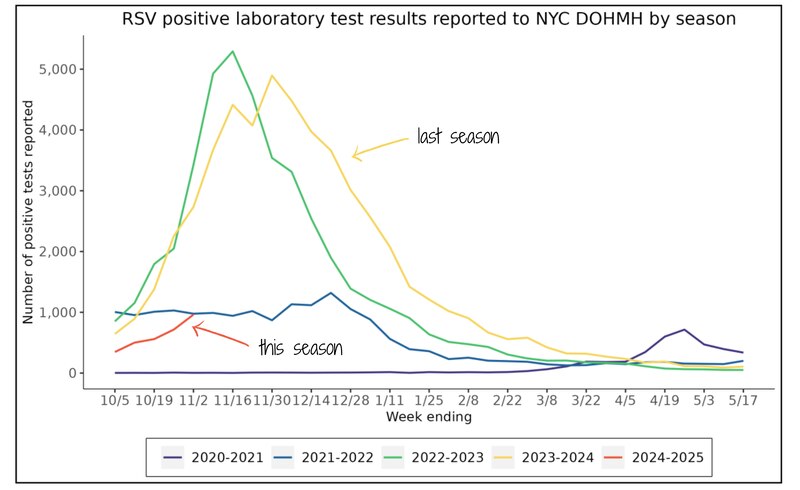
Severe influenza and RSV remain low in New York state: influenza has 0.1 hospitalizations per 100,000 people, and RSV has 0.6.
Now is a great time to get vaccinated before the respiratory season
- Influenza and updated Covid-19 vaccines are available throughout New York City; find locations using the NYC Vaccine Finder, including sites offering free vaccines for people without insurance.
- Vaccination locations throughout the rest of New York state can be found at Vaccines.gov.
- The New York State Vaccines for Adults Program provides vaccines at no cost to underinsured, eligible adults throughout the state. More info here.
- RSV vaccines and monoclonal antibodies are available for a subset of people (pregnant people, older adults, and babies). YLE National had a great post on how effective these treatments were in preventing severe disease last year.
Adults aged 65+ or immunocompromised: Expect a Covid-19 shot this spring
The Centers for Disease Control and Prevention and the New York State Department of Health recommend that those aged 65 and over or who are immunocompromised get two doses per year, six months apart. This is because protection wanes. Last fall, there was zero additional protection against hospitalization six months after vaccination. (Note: This is additional protection compared to all the immunity already out there.)
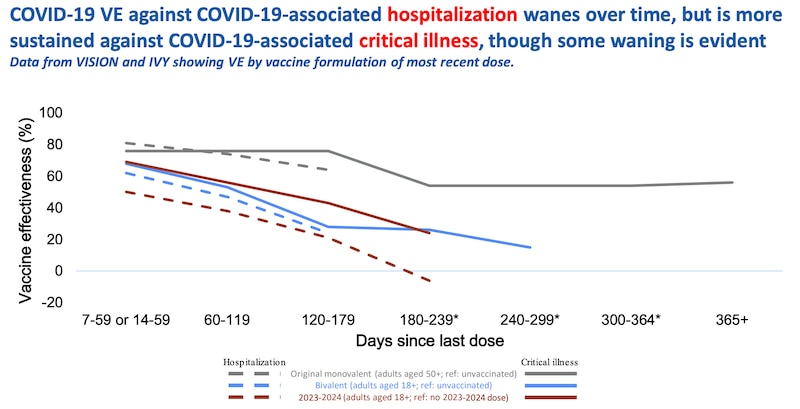
Bottom line
You’re all caught up on this week’s New York public health news. See you next week with more!
Love,
Your Local Epidemiologist
Dr. Marisa Donnelly, a senior epidemiologist with wastewater monitoring company Biobot Analytics, has worked in applied public health for over a decade, specializing in infectious diseases and emerging public health threats. She holds a PhD in epidemiology and has led multiple outbreak investigations, including at the California Department of Public Health and as an Epidemic Intelligence Service Officer at the Centers for Disease Control and Prevention. Marisa has conducted research in Peru, focusing on dengue and Zika viruses and the mosquitoes that spread them. She is Healthbeat’s contributing epidemiologist for New York in partnership with Your Local Epidemiologist, a Healthbeat supporter. She lives in New York City. Marisa can be reached at mdonnelly@healthbeat.org.

